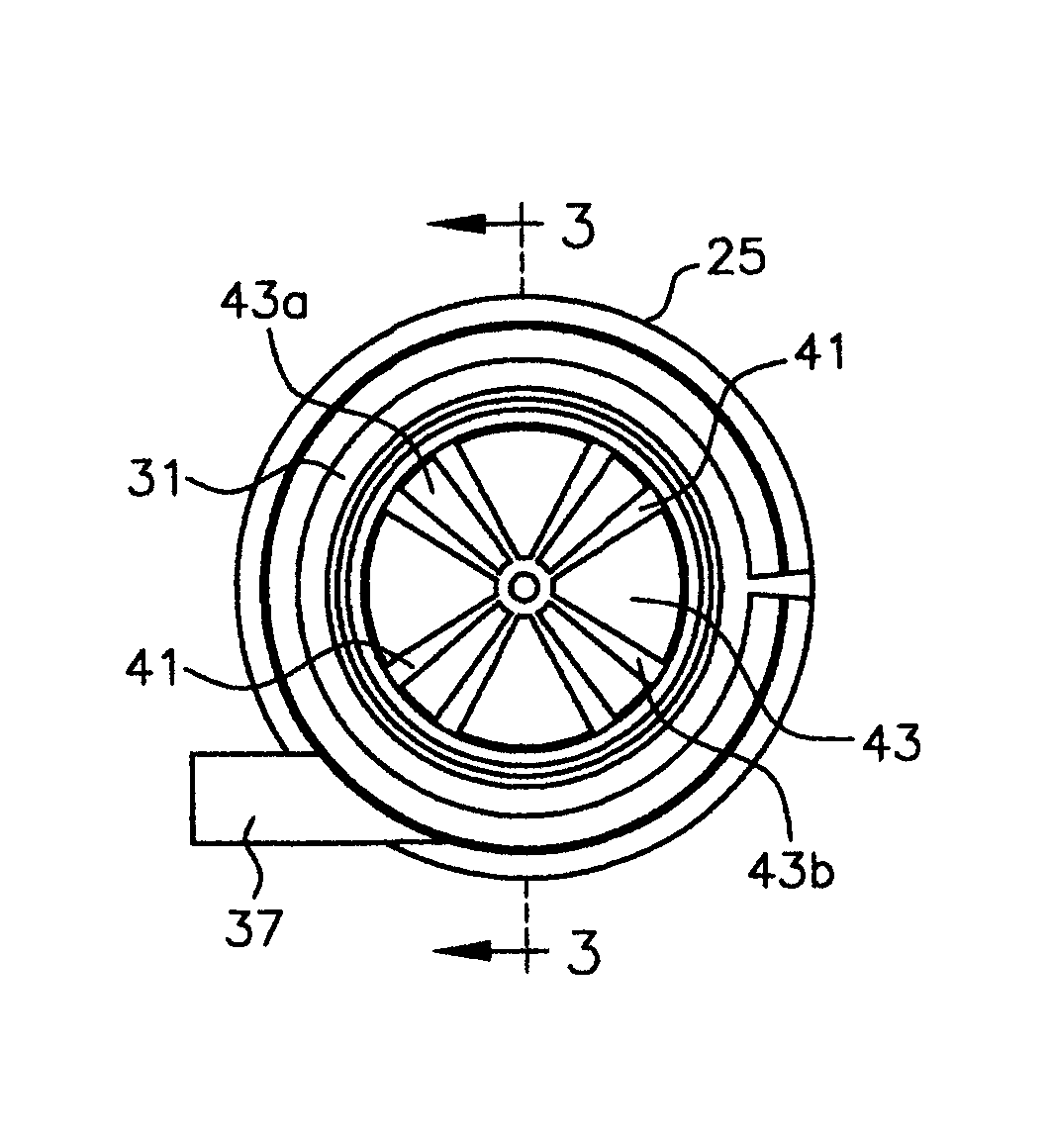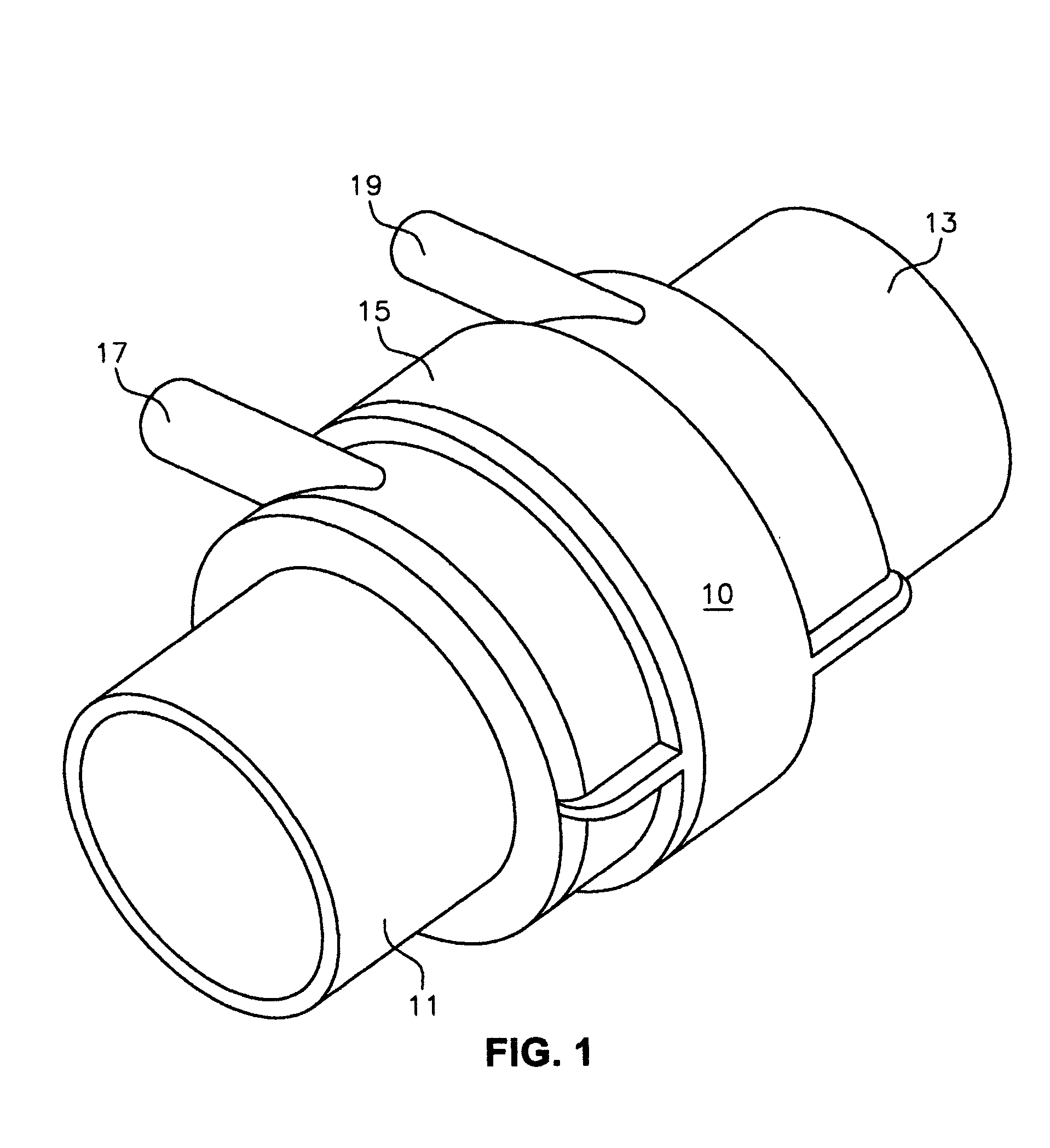Flow sensor with integrated delta P flow restrictor
a flow restrictor and flow sensor technology, applied in the field of high mass flow sensors, can solve the problems of no longer corresponding to the accurate flow rate value of the measured resistance of an anemometer or other sensor, and not holding at high flow velocity, so as to achieve the effect of minimizing turbulen
- Summary
- Abstract
- Description
- Claims
- Application Information
AI Technical Summary
Benefits of technology
Problems solved by technology
Method used
Image
Examples
Embodiment Construction
[0019] The present invention provides for substantial improvements in the operation of a fluid flow sensor, 10 generally, such as that shown in FIG. 1. The sensor is fitted in a flow path such that fluid, either liquid or gas as the system dictates, enters the inlet 11 and exits outlet 13. The body 15 of the sensor includes pressure tap inlet 17 and outlet 19 where fluid is removed and measured using conventional equipment, not shown.
[0020] Body 15 contains a flow restrictor that is provided to handle the fluid flow as it passes through the body and fluid is directed to the airflow or pressure sensor via inlet 17 and outlet 19. FIGS. 2 and 3 represents a prior art flow sensor and flow restrictor, where body 25 includes a cylindrical inlet portion 31, a cylindrical outlet portion 33 and a flow restrictor 35 in the middle. Pressure taps 37 and 39 feed the inlet and outlet 17 and 19 respectively of FIG. 1. A plurality of vanes 41 define a plurality of channels 43 though which fluid fl...
PUM
 Login to View More
Login to View More Abstract
Description
Claims
Application Information
 Login to View More
Login to View More - R&D
- Intellectual Property
- Life Sciences
- Materials
- Tech Scout
- Unparalleled Data Quality
- Higher Quality Content
- 60% Fewer Hallucinations
Browse by: Latest US Patents, China's latest patents, Technical Efficacy Thesaurus, Application Domain, Technology Topic, Popular Technical Reports.
© 2025 PatSnap. All rights reserved.Legal|Privacy policy|Modern Slavery Act Transparency Statement|Sitemap|About US| Contact US: help@patsnap.com



